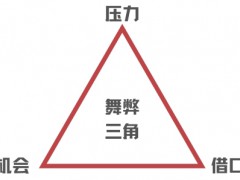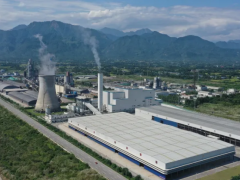据油气新闻网9月12日报道,国际能源署(IEA)在一份新报告中表示,全球能源部门的就业人数已超过疫情前的水平,主要是清洁能源领域的就业人数增加。该报告提供了首个全球能源行业就业基准。
《世界能源就业报告》创刊号将按技术和价值链划分能源部门就业情况。该报告为政策制定者和行业决策者提供了丰富的数据基础,以了解地缘政治冲突后清洁能源转型和能源供应链变化对劳动力的影响。
全球能源就业数量已从疫情造成的中断中恢复,超过了大流行前的6500多万人,约占总劳动力的2%。这一增长是由清洁能源部门的招聘推动的。与此同时,石油和天然气行业在疫情开始时出现了一些最大的就业降幅,目前尚未完全恢复。
随着最近的复苏,清洁能源在总能源就业中所占的比例超过了50%,近三分之二的工人参与了新项目的建设和清洁能源技术的制造。与此同时,随着新项目的开发,尤其是新的液化天然气基础设施,石油和天然气行业的就业人数也在上升。
能源行业将在2022年实现近年来最快的就业增长,然而,高投入成本和通胀压力正在增加一些地区和子行业(如太阳能、风能、石油和天然气)的招聘和供应链挑战。对疫情和地缘政治冲突的政策回应,包括美国的《通货膨胀削减法案》,将继续增加新的招聘需求,并改变全球能源供应链的现状。
本报告中统计的能源工作跨越价值链,大约三分之一的工人从事能源燃料供应(煤炭、石油、天然气和生物能源),三分之一从事电力行业(发电、输电、配电和存储),还有三分之一从事在关键能源最终用途(车辆制造和能源效率)。 一半以上的能源就业在亚太地区。
这反映出该地区能源基础设施的迅速扩建,以及获得低成本劳动力的途径,这些都使得服务于当地和出口市场的制造业中心得以出现,尤其是太阳能、电动汽车和电池。
在国际能源署的所有设想中,清洁能源就业岗位都将增长,超过化石燃料就业岗位的下降。2050年零排放设想下,到2030年将新增1400万个清洁能源就业岗位,另有1600万工人将从事与清洁能源相关的新工作。新能源工作可能并不总是在同一地点,也不需要与所替代的工作相同的技能,这就要求决策者将重点放在工作培训和能力建设上,以确保能源转型使尽可能多的人受益。
国际能源署执行主任法提赫·比罗尔表示,世界各国对当前危机的反应是寻求加速本国清洁能源产业的增长。采取这一措施的地区将看到就业机会的大幅增长。抓住这个机会需要熟练的工人。政府、公司、劳工代表和教育工作者必须齐心协力,制定培养这种劳动力所需的计划和认证,并确保创造的工作是可以吸引多元化劳动力的优质工作。
全球能源行业约45%的工人从事高技能职业,而在更广泛的经济体中,这一比例约为25%。一些化石燃料公司正在内部对工人进行再培训,以适应低碳领域的职位,以保留人才或在需要时保持灵活性。然而,这并不是在所有地方都可行,确保受影响工人以人为本、公正过渡必须继续成为政策制定者的重点,尤其是在就业数年来持续下降的煤炭行业。
郝芬 译自 油气新闻网
原文如下:
Clean energy jobs surpass pre-pandemic levels:IEA
Global employment in the energy sector has risen above its pre-pandemic levels, led by increased hiring in clean energy, said the International Energy Agency (IEA) in a new report that offers the first worldwide benchmark for employment across energy industries.
The inaugural edition of the World Energy Employment Report, which will be published annually, maps energy sector employment by technology and value chain segment. The report provides a data-rich foundation for policy makers and industry decision makers to understand the labour-related impacts of clean energy transitions and shifts in energy supply chains following the war.
The amount of energy jobs worldwide has recovered from disruptions due to Covid-19, increasing above its pre-pandemic level of over 65 million people, or around 2% of the total labour force. The growth has been driven by hiring in clean energy sectors. The oil and gas sector, meanwhile, saw some of the largest declines in employment at the start of the pandemic and has yet to fully recover.
With the recent rebound, clean energy surpassed the 50% mark for its share of total energy employment, with nearly two-thirds of workers involved in building new projects and manufacturing clean energy technologies. At the same time, the oil and gas sector is also experiencing an upswing in employment, with new projects under development, notably new liquefied natural gas (LNG) infrastructure.
The energy sector is set to see its fastest employment growth in recent years in 2022, however high input costs and inflationary pressures are adding to hiring and supply chain challenges already present in some regions and subsectors, such as solar, wind, oil, and gas. Policy responses to the pandemic and the war, including the US Inflation Reduction Act, will continue to add to new hiring demand and to shifting the status-quo of global energy supply chains.
Energy jobs counted in this report span the value chain, with around a third of workers in energy fuel supply (coal, oil, gas and bioenergy), a third in the power sector (generation, transmission, distribution and storage), and a third in key energy end uses (vehicle manufacturing and energy efficiency). More than half of energy employment is in the Asia-Pacific region.
This reflects rapidly expanding energy infrastructure in the region and access to lower-cost labour that has enabled the emergence of manufacturing hubs that serve both local and export markets, notably for solar, electric vehicles and batteries.
In all IEA scenarios, clean energy employment is set to grow, outweighing declines in fossil fuels jobs. In the Net Zero Emissions by 2050 Scenario, 14 million new clean energy jobs are created by 2030, while another 16 million workers switch to new roles related to clean energy. New energy jobs may not always be in the same location nor require the same skills as the jobs they replace, requiring policy makers to focus on job training and capacity building to ensure that energy transitions benefit as many people as possible.
“Countries around the world are responding to the current crisis by seeking to accelerate the growth of homegrown clean energy industries. The regions that make this move will see huge growth in jobs,” said IEA Executive Director Fatih Birol.
“Seizing this opportunity requires skilled workers. Governments, companies, labour representatives and educators must come together to develop the programmes and accreditations needed to cultivate this workforce and ensure the jobs created are quality jobs that can attract a diverse workforce.”
Around 45% of the world’s energy workers are in high-skilled occupations, compared with about 25% for the wider economy. Some fossil fuel companies are retraining workers internally for positions in low-carbon areas to retain talent or to maintain flexibility as needs arise. However, this is not an option everywhere, and ensuring a people-centred and just transition for affected workers must remain a focus for policy makers, especially in the coal sector where employment has been declining consistently for several years.
免责声明:本网转载自其它媒体的文章及图片,目的在于弘扬石化精神,传递更多石化信息,宣传国家石化产业政策,展示国家石化产业形象,参与国际石化产业舆论竞争,提高国际石化产业话语权,并不代表本网赞同其观点和对其真实性负责,在此我们谨向原作者和原媒体致以崇高敬意。如果您认为本站文章及图片侵犯了您的版权,请与我们联系,我们将第一时间删除。







